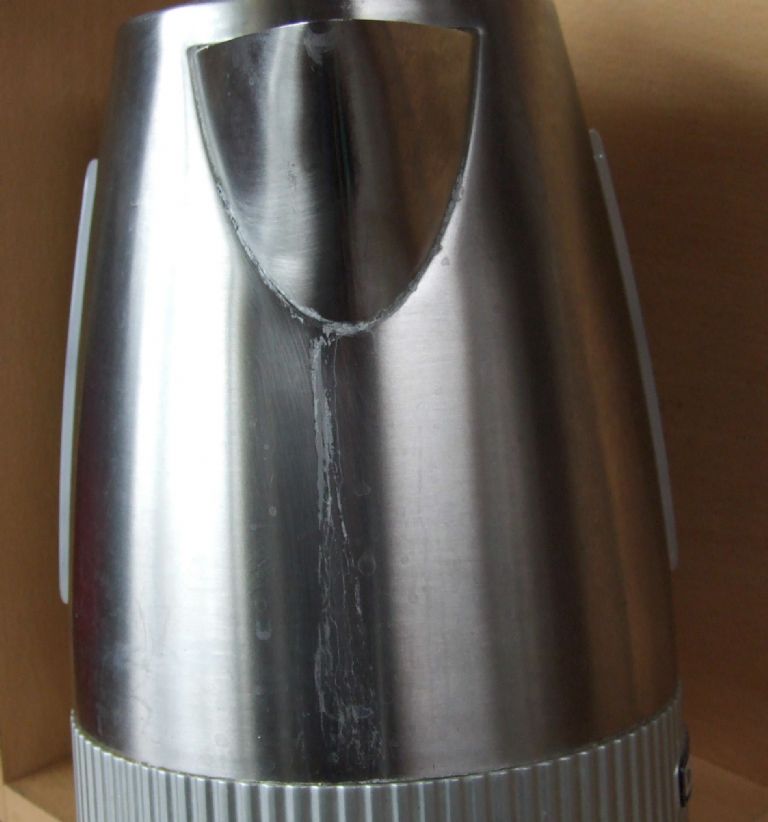Thanks for the input so far, the differential expansion would certainly put stress on the joint. Plus the Epoxy would act as an insulator as well. Which would only add to the problem.
I have assumed it to be Epoxy, at the failure zone the material has the appearance of granulated carbon. Given the country or origin it could be something else. The other problem is what cannot be seen, ie the joint degrading inside the spout. Inside, it has all the appearances of having failed already. It is just the outer layer of the joint holding it at the moment. The crack an be easily flexed with the index finger and thumb.
Unfortunately it may be my bad Karma, all things electrical have a habit of going wrong around me, especially lately.
The return of the kettle to the shop was not possible as the purchase happened some time before we actually started to use the kettle.
By comparison the kettle that was used while we were sourcing another is an all metal body "Swan", with internal exposed element. This was given to us as a wedding present nearly 50 years ago. No problem with the spout on this one, the joint being a welded one.
Regards
Gray,
larry phelan 1.






